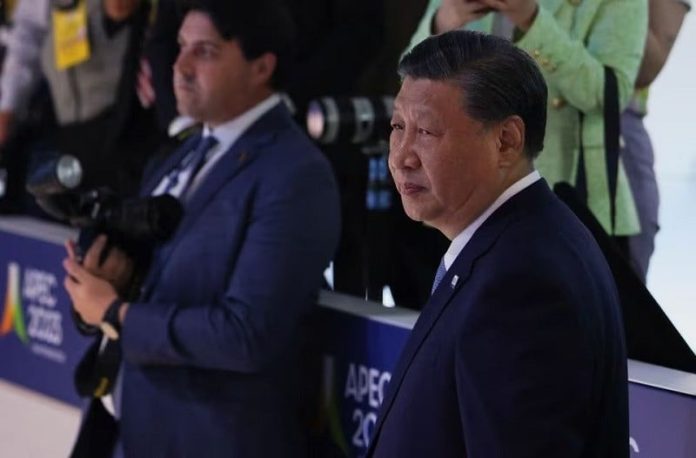Old foes China and Vietnam, at odds over claims in the South China Sea, declared on Tuesday they want to boost ties and build a community with a “shared future”, just three months after Hanoi upgraded its formal relations with the United States.
As Chinese President Xi Jinping visited Hanoi on his first trip as China’s leader to Vietnam in six years, the two countries signed 37 cooperation deals in what can be seen as a triumph of Vietnam’s “Bamboo diplomacy” as both China and the United States vie for influence.
After China’s push, Vietnam agreed to “support the initiative of building of a shared future community for human kind”, according to a joint statement shown to reporters.
The countries’ diplomats had debated the “shared future” phrase for months, following Hanoi’s initial reluctance to use it, say officials and diplomats.
The Chinese term literally means “common destiny”, but its translation in English and Vietnamese is “common future”, which may be seen as less demanding.
“One declaration, many translations,” said a diplomat based in the Vietnamese capital, commenting on the interpretation of the term.
However, the upgrade in diplomatic ties would just be symbolic, said Le Hong Hiep, a specialist in Vietnamese strategic and political issues at Singapore’s Iseas–Yusof Ishak Institute.
“Vietnam’s mistrust of China runs deep, and from the Vietnamese people’s viewpoint, there is little to no ‘shared destiny’ between the two countries, as long as China continues to claim most of the South China Sea,” he said.
Despite their existing close ties on the economic front, the neighbours have been at odds over boundaries in the South China Sea and have a millennia-long history of conflict.
In a sign of possible de-escalation, the two countries signed a memorandum of understanding for joint patrols in the Tonkin Gulf in the South China Sea, according to one of the agreements.
THIRTY-SEVEN DEALS
Beyond taking ties to a level Beijing may see as being above those with the United States, the upgraded status came with the signing of 37 cooperation deals, according to reporters who saw the signed documents.
However, that was short of 45 deals initially proposed, according to one Vietnamese official.
Deals included a memorandum of understanding on cross-border rail development.
Top officials in both countries had urged a boost to a rail link between the southern Chinese city of Kunming and the northern Vietnamese port of Haiphong, which crosses regions in Vietnam rich in rare earths.
China’s ambassador to Vietnam Xiong Bo said earlier this week Beijing was ready to offer grants to develop rail connections, though the volume and terms of possible loans are not clear.
Boosting transport links would allow Vietnam to export more to China, especially farm products, while Beijing wants to further integrate the country’s north with its southern supply chain networks.
Chinese firms have moved some operations to Vietnam quicker this year than before the COVID pandemic, looking to be closer to Western clients there, to lower risks from U.S.-China trade tension and cut exposure to China’s weakened economy.
Stronger rail networks would speed import of components from China for assembly in Vietnam, effectively expanding China’s Belt and Road Initiative (BRI).
Currently the Hanoi metro is Vietnam’s only project to have received BRI loans, but it has not been labelled as such in a country where anti-Chinese sentiment is still widespread enough that such moves could be viewed as getting too close to Beijing.
The two countries agreed to jointly promote the “two corridors, one belt” initiative, which is the Vietnamese term for infrastructure projects supported by China.
Xi has also urged wider co-operation on security, connectivity, green energy and critical minerals, in a reference to the rare earths, of which China is the world’s leading refiner while Vietnam has the second largest estimated reserves after its neighbour.
Not all deals have yet been made public.

































